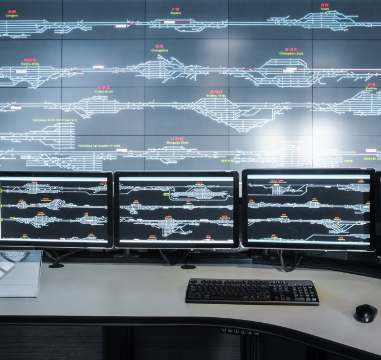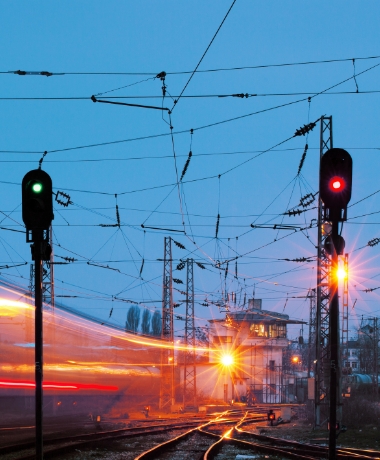Renowned as the ‘City of Dreams’ and the premier financial hub of India, Mumbai brims with opportunities, hopes and aspirations attracting millions in search for an enhanced qualify of life. This in turn has also made the city one of the most densely populated cities of the world and placed an immense pressure on the city’s mobility infrastructure. The city’s linear geography, increasing migration rate, a growing number of vehicles, and narrow roads are among some of the reasons that make the city the world’s third most congested traffic1 with people losing many hours stuck in traffic jams, taking a toll on their physical and mental health.
The pressure propelled by huge demand is also clearly evident from Mumbai's Suburban Railway system, called as the city’s lifeline, which accommodates and facilitates the movement of over six million commuters daily2. The trains carry nearly 5,000 passengers against the design capacity of 1,750 making it one of the busiest and public driven public transport systems in the world3, thus necessitating the need for an alternative, energy-efficient, and faster public transport system to accommodate the growing ridership demands in the city.
The launch of Metro services has come as a boon for thousands of people of Mumbai who are switching from local trains to Metro thanks to the seamless connectivity across the city, comfortable and safer riding experience. While easing pressure on the straining infrastructure, the Metros are paving the way for safer, cleaner, and sustainable public transport in this land of opportunities.
The Mumbai Metropolitan Region (MMR) is one of the fastest growing metropolises in India, consisting of Greater Mumbai and satellite towns such as Thane, Navi Mumbai, and Mira Bhayander among others. Millions of people enter Greater Mumbai from these towns, creating severe traffic congestion on roads, environmental pollution, and slower and strenuous journeys. Owing to limited land space, the Central Government and the State Government of Maharashtra are laying a thrust on expanding public transport infrastructure to overcome these challenges, with particular focus on Metros which promises superior performance, energy efficiencies, and integration of innovation, digitalization and automation. Hitachi Rail India, known for its steadfast dedication to social innovation and global leadership in integrated rail solutions – is supporting Governments mission to expand the Metro rail transit system and enable seamless last mile connectivity across Mumbai Metropolitan Region for sustainable growth of the metropolis.
As a testament of its commitment towards transforming the urban mobility landscape through Green, Digital, and Innovation, Hitachi Rail India is powering the Navi Mumbai and Mumbai Metro rail systems with its advanced Propulsion system, Train Control and Management System, and signaling solutions that lay the foundation for a safer and more secure railway system that serves as a catalyst for a greener India.
Hitachi is helping ease rail mobility across the Mumbai by providing proven Propulsion System, Auxiliary Power Supply (APS), Traction Motor and Train Control and Management System (TCMS) solutions on Rolling Stock to make the Mumbai Metro Line 2 and 7 one of the most modern and robust Metro in the world. Hitachi's energy efficient and state of art technology is powering the Rolling Stock on Mumbai Metro Line 2&7 (MRS1), helping millions of people travel safely and promoting sustainable travel.
Being one of the most ambitious and prestigious infrastructure projects in India, the Mumbai Metro Rail project requires a TCMS to offer operational benefits and enhance passenger comfort. Hitachi Rail’s TCMS is flexible and adaptable to developing requirements. It is responsible for monitoring the real-time status of all systems in the train, for ease of maintainability. Also, TCMS controls and commands all the systems in the train. Meanwhile, Hitachi’s Propulsion system has an energy efficient system and without compromising the acceleration required for the train to achieve its daily target runs for densely populated Mumbai region, making Hitachi’s propulsion system one of the fastest transportation system in Mumbai with less energy consumption.
Sees an object, reaches for it with hand, bends wrist and fingers to pick object up, raises arm to bring it close to face

Train reaches station, automatic doors release after train stands still, doors close after all passengers stop moving, brakes are released once every single door is airtight.


The Navi Mumbai Metro has been a game changer in terms of reducing traffic congestion and making commute time shorter and more predictable. Hitachi Rail India played a vital role in driving the success of 11.1km metro project with its state-of-the-art interlocking system and CBTC (Communication Based Train Control) signaling for Automatic Train Supervision.
Overall, CBTC is a proven technology that offers many advantages over traditional signaling systems. Its ability to increase capacity through dynamic and shortened headways, improve safety and efficiency, and provide accurate information on train locations and movements makes it the best option for modern rail projects like the Navi Mumbai Metro Rail Project. Hitachi Rail’s interlocking system enhances passenger safety by ensuring that trains can cross junctions safely with improved operational efficiency through automatic route setting.

Together, both these solutions are accelerating digital railways that guarantee improved reliability of service, punctuality, and energy savings for environment-friendly journeys.
The deployment of cutting-edge Green and Digital technologies by Hitachi India is contributing towards the modernization of rail mobility. Hitachi is proud to be contributing to Indian Government’s ambitious plans for sustainable urban mobility and is committed towards providing reliable and innovative solutions that help decongest cities, reduce carbon emissions, and improve mobility for the citizens of the nation for a better quality of life.
1. https://www.india.com/news/india/mumbai-3rd-most-congested-traffic-in-world-bengaluru-delhi-also-in-top-10-5613609/
2. https://timesofindia.indiatimes.com/city/mumbai/mumbai-train-ridership-14-short-of-pre-covid-level-as-wfh-persists/articleshow/96563003.cms
3. https://blogs.adb.org/blog/mumbai-metro-transforming-transport-megacity
4. https://www.transformative-mobility.org/assets/publications/Tumi_Mumbai_Factsheet.pdf